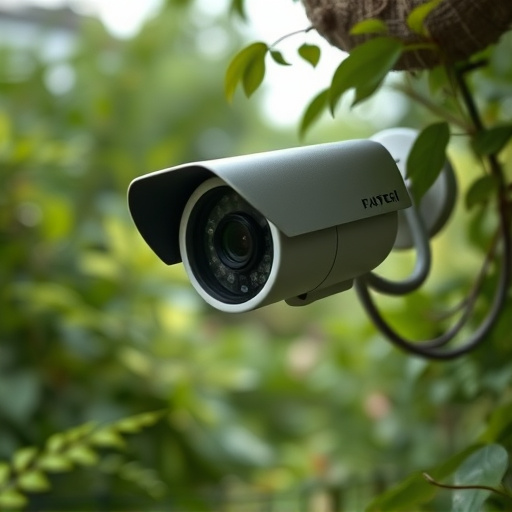Wireless surveillance systems, especially remote viewing nanny cameras, offer discreet, convenient monitoring via radio waves and internet connection. Strategic camera placement at entry points and common areas ensures clear footage while respecting privacy in sensitive spaces. Optimizing signal strength through direct line-of-sight and directional antennas enhances image quality. Ethical use includes transparency, consent, strict data protection, and defining system purposes to maintain trust and avoid micromanagement.
Wireless surveillance equipment offers unparalleled convenience and flexibility for monitoring your home or office. From understanding the basics of wireless surveillance technology to selecting optimal camera locations, optimizing signal strength for remote viewing, and navigating ethical considerations like those involved in a nanny surveillance system, this guide provides essential tips for effective setup and use. Maximize the potential of your remote viewing nanny surveillance system with these expert insights.
- Understanding Wireless Surveillance Technology
- Choosing Ideal Locations for Cameras
- Optimizing Signal for Remote Viewing
- Ethical Considerations for Nanny Surveillance System
Understanding Wireless Surveillance Technology
Wireless surveillance technology has revolutionized the way we monitor and protect our spaces, especially with remote viewing nanny surveillance systems gaining popularity for their convenience and discretion. These systems leverage wireless signals to transmit video and audio feeds from a remote location, allowing users to keep an eye on activities within their homes or businesses without the need for complex wiring. Understanding how this technology works is key to effective deployment and maximizing its potential.
At the heart of any wireless surveillance system are transmitters and receivers that communicate through radio waves. The equipment captures and converts signals into digital data, which is then transmitted wirelessly over a certain range. This real-time data can be accessed from anywhere with an internet connection, enabling remote viewing. Different systems offer various features like motion detection, night vision, and two-way audio communication, enhancing their versatility for diverse surveillance needs.
Choosing Ideal Locations for Cameras
When setting up a wireless surveillance system, especially for remote viewing or nanny surveillance, choosing the right locations is key to effective monitoring. Cameras should be placed in strategic spots that offer clear and unobstructed views of the targeted areas. Ideal locations often include entry points like doors and windows, as well as common areas where activities frequently occur. For example, in a home, placing cameras at front and back door entrances, as well as in living rooms and kitchens, can provide comprehensive coverage.
Consider factors such as lighting, angle, and potential blind spots when selecting camera positions. Ensure that the footage captured is clear and detailed enough to identify individuals or activities. Additionally, think about privacy concerns and ensure that cameras are not positioned in areas where they might infringe on personal privacy, like bedrooms or bathrooms. Proper placement of surveillance equipment can significantly enhance security while respecting privacy boundaries.
Optimizing Signal for Remote Viewing
To ensure optimal performance of a remote viewing nanny surveillance system, proper signal optimization is crucial. Positioning the camera and receiver strategically within range is key; line-of-sight visibility between them maximizes signal strength. Avoid obstructions like walls or furniture that can weaken or block the signal.
Additionally, adjusting frequency bands to align with minimal interference from other devices can enhance signal quality. Using directional antennas specifically designed for long-range communication further improves reception, allowing for clear and reliable remote viewing of your nanny’s activities.
Ethical Considerations for Nanny Surveillance System
When employing a remote viewing nanny surveillance system, ethical considerations are paramount. It’s crucial to ensure that any monitoring is done with full transparency and respect for privacy. Parents must inform caregivers about the presence of cameras and microphones, especially in areas like bedrooms and bathrooms, where expectations of privacy are higher. Obtaining consent from all involved parties is essential, and strict data protection protocols should be in place to safeguard personal information.
Additionally, it’s important to set clear boundaries on how the footage will be used. Monitoring should be limited to specific purposes, such as ensuring the well-being of the child, and not for micromanagement or invasive observation. Regular reviews of the system’s usage and access protocols can help maintain a healthy balance between safety and privacy, fostering an environment of trust and respect within the household.
Wireless surveillance equipment offers a sophisticated solution for remote viewing and nanny surveillance systems. By understanding the technology, strategically placing cameras, optimizing signal strength, and adhering to ethical guidelines, users can effectively protect their homes and families while leveraging the convenience of remote monitoring. Incorporating these location detection tips ensures a comprehensive security setup that combines modern technology with responsible practices.
